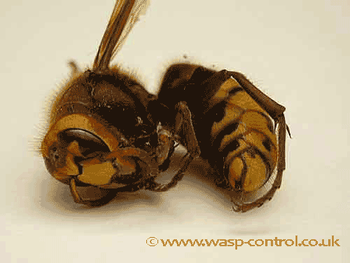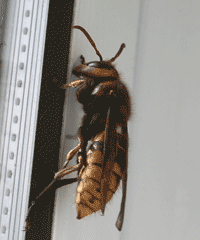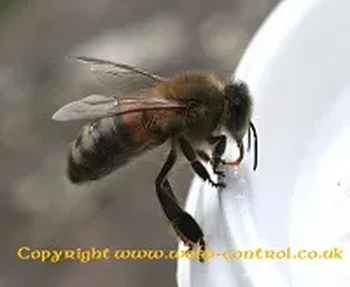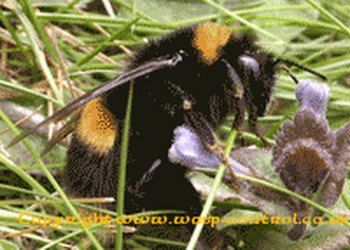Wasps & Hornets
The Purpose of Wasps in the Ecosystem
Introduction
People often wonder about the purpose served by wasps. This inquiry arises due to the occasional nuisance caused by these insects. However, understanding their role in the ecosystem reveals their importance.
Pollination in Early Summer
During early summer, wasps, similar to bees, contribute to pollination as they gather nectar from plants and flowers. Eradicating wasps would create more problems than it solves, emphasizing their significance despite occasional inconveniences.
Predatory Behavior of Wasps and Hornets
Wasps and hornets play a crucial role as predatory insects. They spend a significant amount of time hunting smaller insects to feed their larvae. The process involves the adult wasps killing insect prey, which is then chewed into small packages and transported back to the nest. The larvae turn these prey exoskeletons into a sugary solution, which is fed back to the adult wasps.
Impact on Insect Population
The exact number of insects eliminated by a single wasp colony throughout a summer is challenging to determine. Although there is skepticism about the suggested figure of approximately five metric tons caught by a single nest in a year, it is evident that the impact is substantial.
Conclusion
In conclusion, despite being perceived as irritating to humans, wasps play a vital role in maintaining ecological balance through pollination and insect population control. Understanding their ecological contributions can foster a greater appreciation for these often misunderstood insects.
Which wasps are a nuisance?
As pest controllers, we are mainly called to deal with three types of social wasps which form colonies. There are many other types of wasps in the UK, but these are mostly solitary wasps.
The primary nuisance wasps are:
The common wasp (Vespa Vulgaris)
How can we identify a common wasp?
Face view of common wasp, notice the anchor marking.

German wasps (Vespa Germanica)
The German wasp builds its nest in bushes and trees. It is slightly larger than the common wasp and darker in colour.

The Hornet (Vespa Crabro)
The hornet is noticeably bigger than your average wasp and can be an inch or more in length. They tend to have more red colouring.
Face view of the hornet.

The Median wasp.
This is a social wasp like the common or European wasp, but most years it is normally out competed by the other species.

Understanding Hornets: A Type of Wasp
Introduction
People often question whether hornets are a type of wasp due to their larger size. Contrary to their size difference, hornets fall under the category of wasps, belonging to the order Hymenoptera. This distinction prompts a closer look at their predatory behavior and interactions with other insects.
Hornets as Predatory Insects
Despite their size, hornets share similarities with common or German wasps in being predatory insects. However, their prey includes larger insects, and they are known for attacking and overtaking wasp nests. In addition to targeting wasps, hornets raid honey bee hives, utilizing the captured larvae as a food source for their own offspring.
Hornets vs. Honey Bees
Interestingly, honey bees have a unique defense mechanism against hornet attacks. Despite the formidable threat posed by hornets, honey bees can withstand higher temperatures. When a predatory hornet invades a honey bee hive, the bees respond by swarming around the intruder and raising the temperature to a level fatal for the hornet. This method essentially involves "cooking" the hornet alive.
Nest Characteristics
While hornet nests are visibly large, they house fewer individuals compared to common wasp nests. Typically, a hornet nest accommodates around 300 individuals. Understanding these aspects sheds light on the dynamics of hornets within the broader context of the wasp family.

Exploring Differences: Wasps, Bees, and Hornets
Introduction
Distinguishing between wasps, bees, and hornets involves understanding their unique characteristics and behaviors. While there are similarities, several key differences set them apart.
Dietary Habits and Honey Production
One notable difference lies in their dietary habits. Unlike bees, wasps and hornets do not use nectar to produce honey. Bees, on the other hand, actively engage in honey production throughout the entire year. Additionally, wasps, despite swarm feeding, do not exhibit the same swarming behavior as honey bees.
Seasonal Activity
Another crucial distinction is the seasonal activity of these insects. Unlike bees that remain active year-round, wasps and hornets are not as persistent. They exhibit specific seasonal behavior, with wasps producing new queens and males at the end of their season in autumn.
Life Cycle and Nesting
The life cycle of wasps and hornets further sets them apart. In autumn, a wasp or hornet nest generates new queens and males. After hatching, they leave the nest to mate. Subsequently, the males die off, and the fertilized queens seek hibernation spots for the winter, often choosing locations like loft spaces or garden sheds. Come spring, these queens emerge from hibernation to establish new nests.
Contrasting Traits of Honey Bees
Honey bees, in contrast, exhibit distinct traits. They remain active year-round and store food (honey) in their nests or hives. Beekeepers often supplement the diet of managed honey bees during winter to ensure their well-being.
Understanding these differences provides insights into the diverse behaviors and life cycles of wasps, bees, and hornets within the insect kingdom.

Although wasps, hornets and honey bees appear similar in appearance, bumble bees are entirely different and appear furry.
